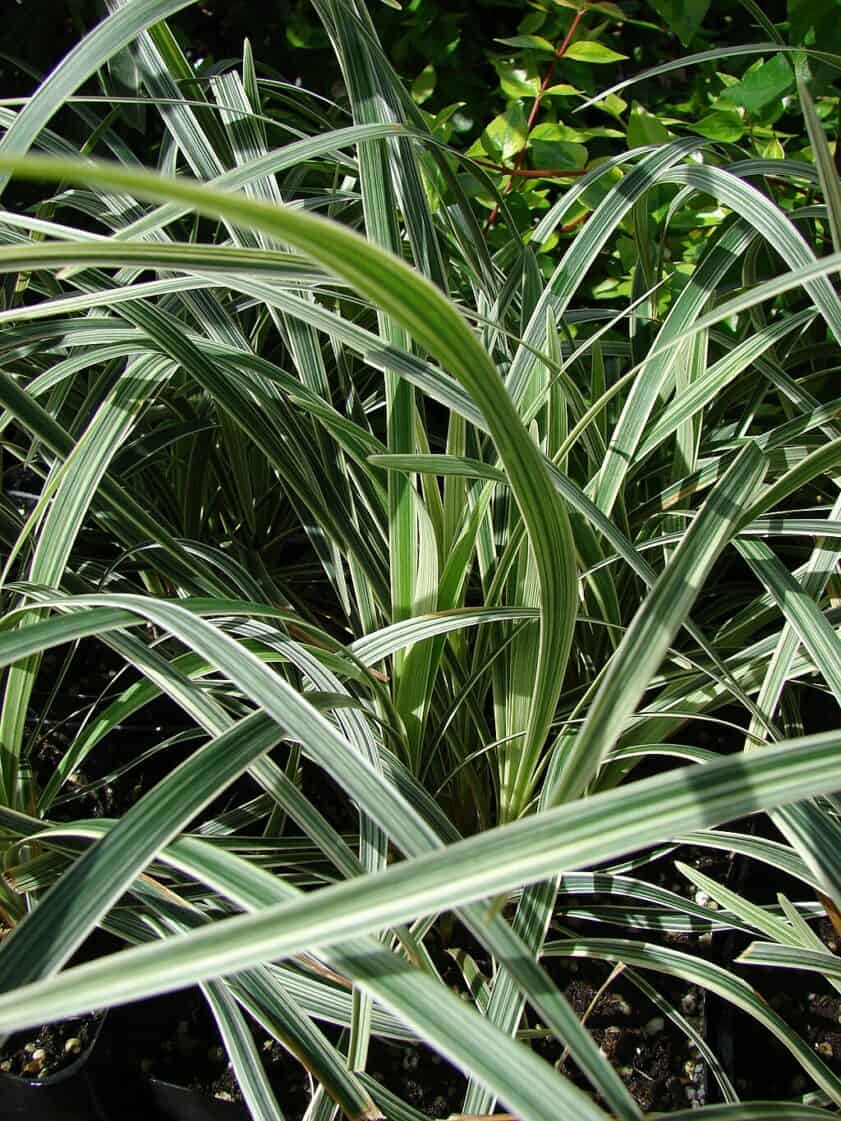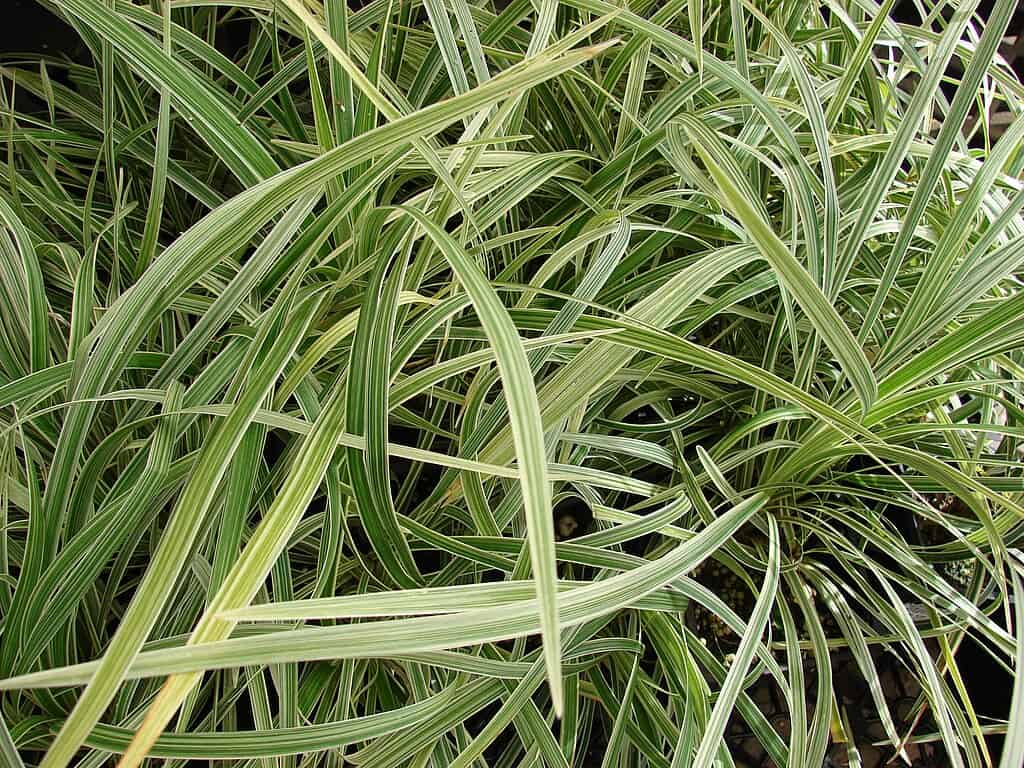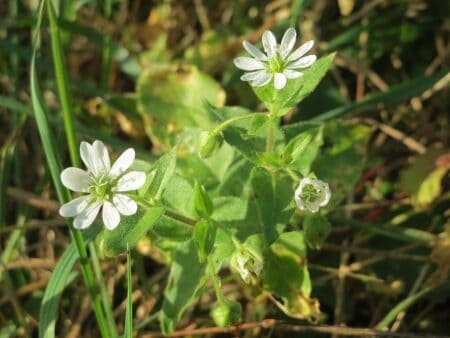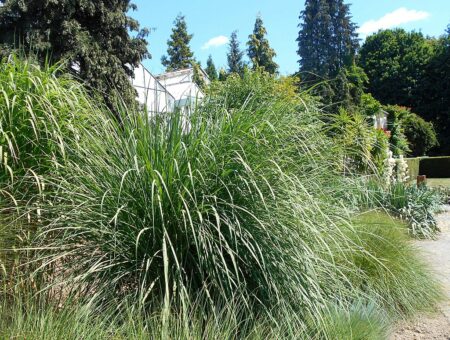Source: Wikimedia
Do you love the look of Aztec grass in your garden?
This ornamental plant is not only beautiful but also easy to grow and care for.
In this article, you will learn everything you need to know about Aztec grass, from what it is, how to plant and maintain it, and what possible problems you might face. Read on to discover the secrets of this amazing grass.
What Is Aztec Grass?
Aztec grass is a type of ornamental grass that originates from Mexico.
It has thin, green leaves that form a rosette pattern around the base of the plant.
The leaves are often variegated with white stripes, giving them a soft and elegant appearance.
The plant also produces small, white flowers in the spring, followed by black berries in the fall.
There are two main varieties of Aztec grass:
- Common Aztec grass (A. teres)
- Blue Aztec grass (A. caerulea).
The common variety has white flowers, while the blue variety has purple flowers.
Both varieties are attractive and add color and texture to any garden or landscape.
Aztec grass is a popular choice for gardeners, landscapers, and botanists because it is easy to grow and care for.
It is also drought-tolerant, deer-resistant, and low-maintenance.
It can be used as a ground cover, a border, or an accent plant in shady or sunny areas.
It can also be grown in containers or indoors with enough light exposure.
Aztec grass is often confused with another ornamental plant called mondo grass. However, they are not the same. Mondo grass belongs to the genus Ophiopogon, while Aztec grass belongs to the genus Liriope. Mondo grass has narrower leaves and smaller flowers than Aztec grass.
How To Grow Aztec Grass?

Aztec grass is a beautiful and low-maintenance ornamental grass that you can grow in four easy steps:
- Choose a suitable location.
- Prepare the soil.
- Plant the Aztec grass.
- Water and mulch it.
Here’s how:
Step #1: Choose a Suitable Location
Aztec grass can grow in full sun or partial shade, but it prefers a spot that receives at least six hours of sunlight per day.
Too much shade can make the leaves lose their variegation and turn yellow or brown.
Avoid planting Aztec grass in areas exposed to strong winds or frost, as these can damage the plant.
Step #2: Prepare the Soil
Aztec grass can tolerate different soil types but prefers well-drained, moist, and fertile soil.
Before planting, you can amend the soil with some organic matter, such as compost or manure, to improve its drainage and nutrient content.
You can also test the soil’s pH level with a kit from your local nursery or garden center.
Aztec grass likes slightly acidic soil with a pH between 6.0 and 7.0.
If your soil is too alkaline, you can lower its pH by adding some sulfur or peat moss.
Step #3: Plant the Aztec Grass
You can plant Aztec grass from seeds, cuttings, or divisions.
Follow these guidelines:
- Seeds can be sown in spring or summer, but they may take a long time to germinate and grow.
- Cuttings can be taken from healthy plants in spring or summer and rooted in moist soil or water.
- Divisions can be made from established plants in late winter or early spring by digging up the clumps and separating them into smaller pieces.
To plant Aztec grass, dig a hole twice as wide and deep as the plant’s root ball.
Place the plant in the hole and fill it with soil, ensuring that the crown is level with the ground.
Gently firm the soil around the plant and water it well.
Space the plants about 12 inches (30 cm) apart for a seamless planting or 18 inches (45 cm) apart for a more airy look.
Step #4: Water and Mulch the Aztec Grass
Aztec grass needs regular watering during the first few weeks after planting until it establishes its roots.
Water it deeply and thoroughly once or twice a week, depending on the weather and soil conditions.
Avoid overwatering or letting the soil dry out completely, which can stress the plant.
To conserve moisture and prevent weeds, you can apply a layer of organic mulch around the base of the plant.
You can use shredded bark, pine needles, straw, or leaves as mulch.
Do not let the mulch touch the plant’s stems, which can cause rotting.
How To Care for Aztec Grass?
Here are the main aspects of Aztec grass care that you should pay attention to.
Fertilizing
Aztec grass does not need much fertilization, but you can apply a balanced fertilizer once or twice a year in the spring and summer to boost its growth and flowering.
Follow the instructions on the fertilizer package, and do not overfeed your plants.
Too much fertilizer can cause leaf burn or excessive growth that may weaken the plant.
Pruning
Aztec grass does not need much pruning, but you can trim it back in late winter or early spring to remove dead or damaged leaves and encourage new growth.
You can also divide your plants every few years to prevent overcrowding and propagate new plants.
To divide Aztec grass, dig up the clumps and cut them into smaller pieces with a sharp knife or spade.
Replant the divisions in new locations or share them with your friends.
Possible Problems With Aztec Grass
Here are some of the most common problems with Aztec grass and how to deal with them.
Slugs and Snails
Slugs and snails are the main enemies of Aztec grass, as they can feed on the leaves and create unsightly brown patches.
To prevent these pests from attacking your plants, you can use barriers, such as copper tape, eggshells, or diatomaceous earth, around the base of the plant.
You can also handpick any slugs or snails that you find on your plants or use bait or traps to lure and kill them.
Leaf Spot
This fungal disease can cause brown or black spots on the leaves that may enlarge and merge together.
To prevent leaf spots, avoid overhead watering, keep your plants healthy and well-watered, and remove any infected leaves as soon as possible.
You can also use a fungicide spray to treat the disease if it is severe.
Invasive Growth
This problem can occur when Aztec grass spreads too quickly by underground rhizomes and forms dense mats that might compete with other plants for space and nutrients.
To prevent this, you can plant your Aztec grass in containers or use barriers to limit its spread.
Conclusion
We hope you have learned a lot from this article about Aztec grass.
This plant is a great choice for any garden or landscape, as it is easy to grow and care for.
It has beautiful variegated leaves and white or purple flowers that can brighten up any space.
It is also hardy and adaptable, but you should be careful of slugs, snails, leaf spots, and invasive growth.
















